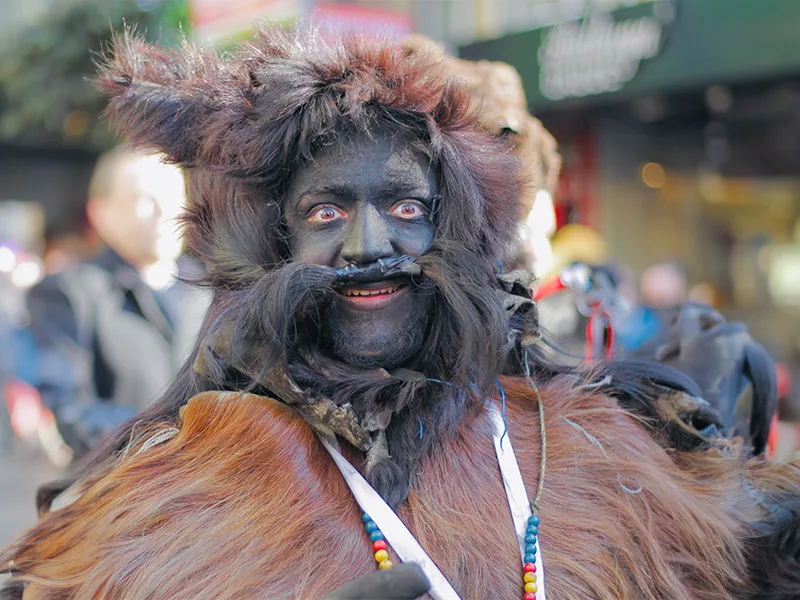Who Were the Tülütabaklar?
Tülütabaklar were local heroes in Balıkesir during the Turkish War of Independence. These brave leatherworkers -called debbağ in Turkish- used fear and theatrical performance to disrupt Greek occupation forces and support underground national meetings. Clad in goat or sheepskin, soot, horse tails, bells, and sticks, they frightened enemy soldiers, creating an atmosphere of psychological resistance.
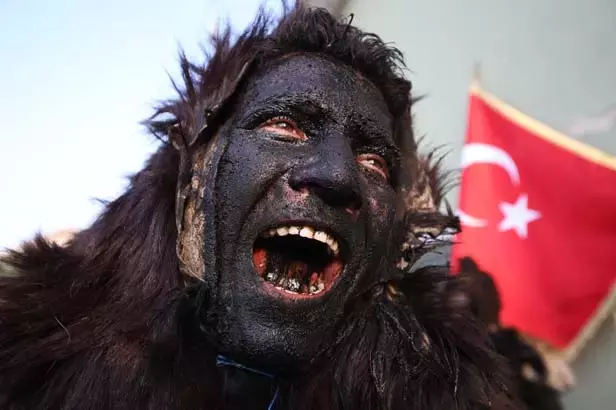
Etymology: The Origins of “Tülütabak”
The term Tülütabak originates from traditional folk performances known in Balıkesir’s villages as Tülükabak, Tülüdebbağ, or Tülüdabak. These names reference the local leatherworking community and their theatrical transformation into fearsome figures during festive or resistance periods.
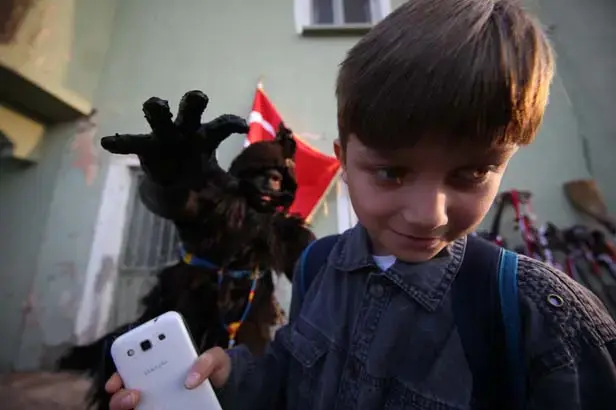
Historical Context: Balıkesir’s Role in the National War
From the early stages of the Turkish War of Independence until the end of the occupation, Balıkesir played a pivotal role in the resistance movement. After the occupation of İzmir, the first national resistance meeting was held in Balıkesir, lighting the spark for the broader movement.
Balıkesir’s significance led it to be called a Kuva-yı Milliye (National Forces) city. The First Balıkesir Congress, which even preceded the Erzurum Congress, played a key role in shaping Turkey’s independence narrative. Local civilians and soldiers united to form a resistance that operated independently of the weakened central government and the Istanbul administration under Allied pressure.
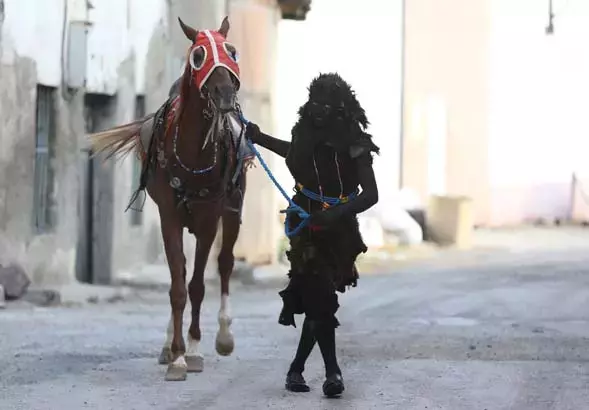
Guerrilla Resistance with a Twist: Tülütabak Attacks
Unlike conventional fighters, the Tülütabaklar used psychological tactics. They emerged at night, covered in hides and soot, faces blackened, and bells clanging as they startled Greek patrols in the streets. Their goal was to confuse, frighten, and distract enemy soldiers, giving cover for covert national meetings.
This tactic worked. While enemy troops increased patrols to suppress local gatherings, Tülütabaklar effectively diverted their attention, allowing the resistance to organize and continue.
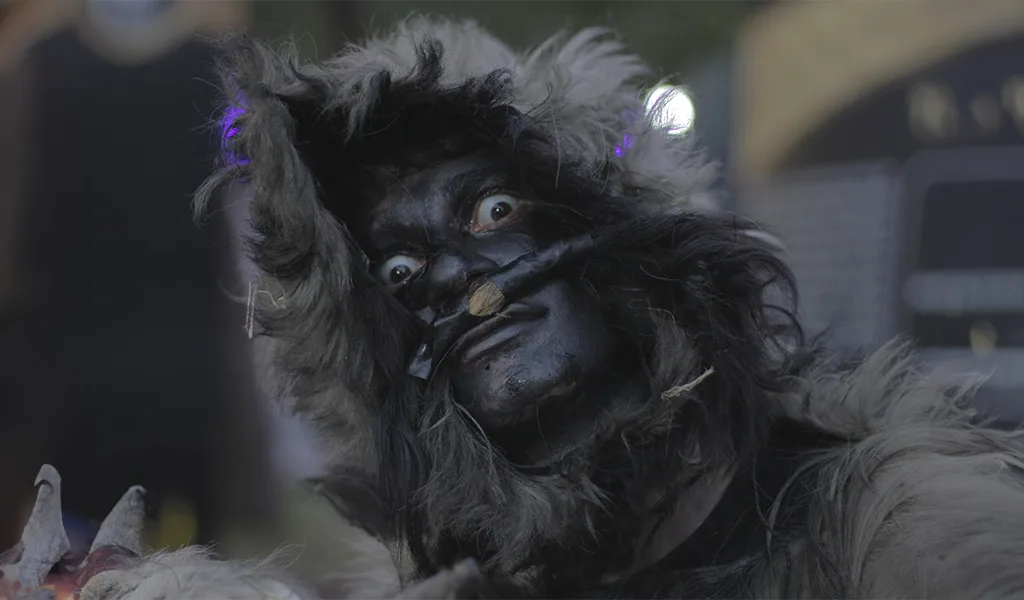
Ritual and Performance: A Tradition Lives On
Today, the Tülütabaklar tradition continues during national celebrations in Balıkesir. During parades, they form a circle before the official delegation, toss their sticks into the center, and perform the Zeybek dance, symbolically saluting the nation.
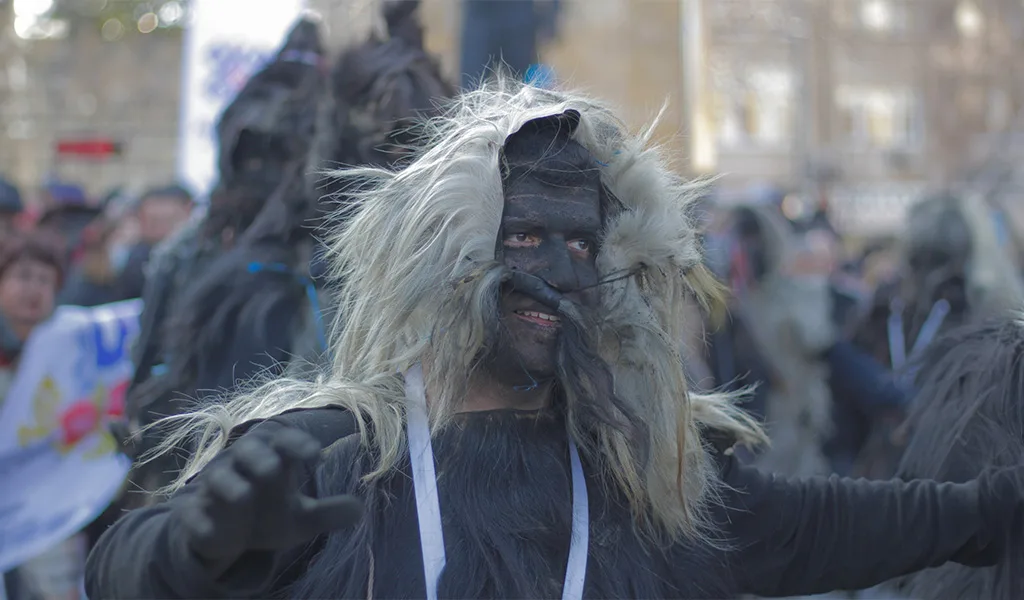
Intelligence in Resistance: Insights from Prof. Dr. Dağlıoğlu
In 1936, Prof. Dr. Hikmet Turhan Dağlıoğlu described the Tülütabak phenomenon in Kaynak magazine:
“Victory in war often depends not on brute strength but on outthinking the enemy, sometimes by appearing weaker, other times by instilling fear. Lacking weapons, the leatherworkers of Balıkesir relied on their trade. They donned goat skins, smeared their bodies with soot from the tanning fires, and fashioned horned headgear to look like terrifying creatures. Emerging from the darkness, these figures struck fear into enemy troops, convincing them that the region was cursed.”
The effort succeeded. So effective was their fear campaign that the Greek commander required every house to hang a lantern at night for visibility.
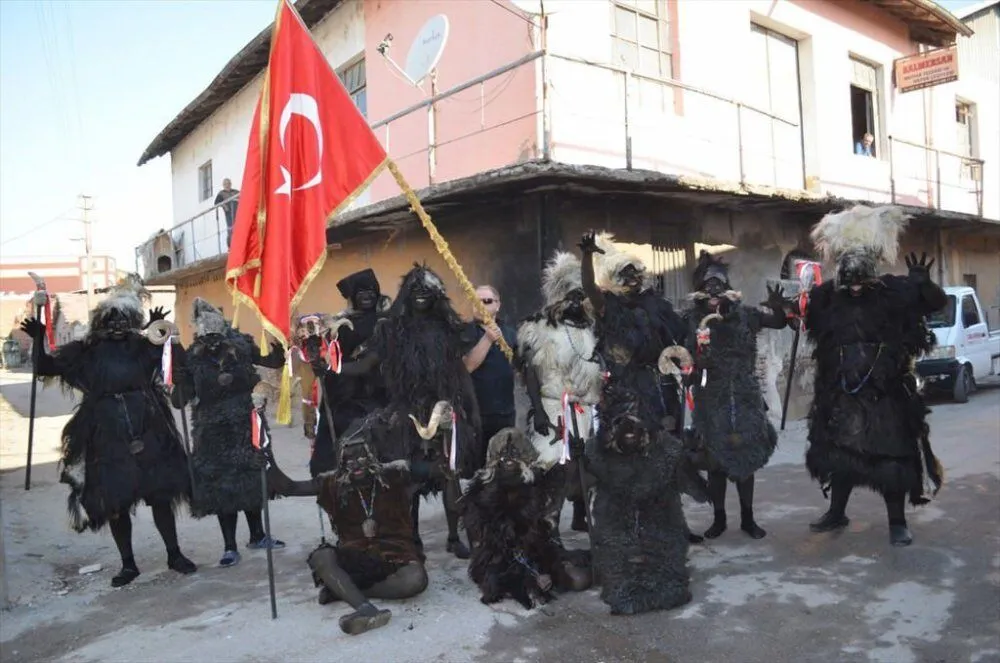
Social Solidarity Through Symbolism
Tülütabaklar exemplified collective resistance. As respected artisans, their terrifying nightly displays weren’t just theatrics; they protected critical national meetings and inspired community spirit. Their loyalty to their homeland and unity as a group became a symbol of social resilience.
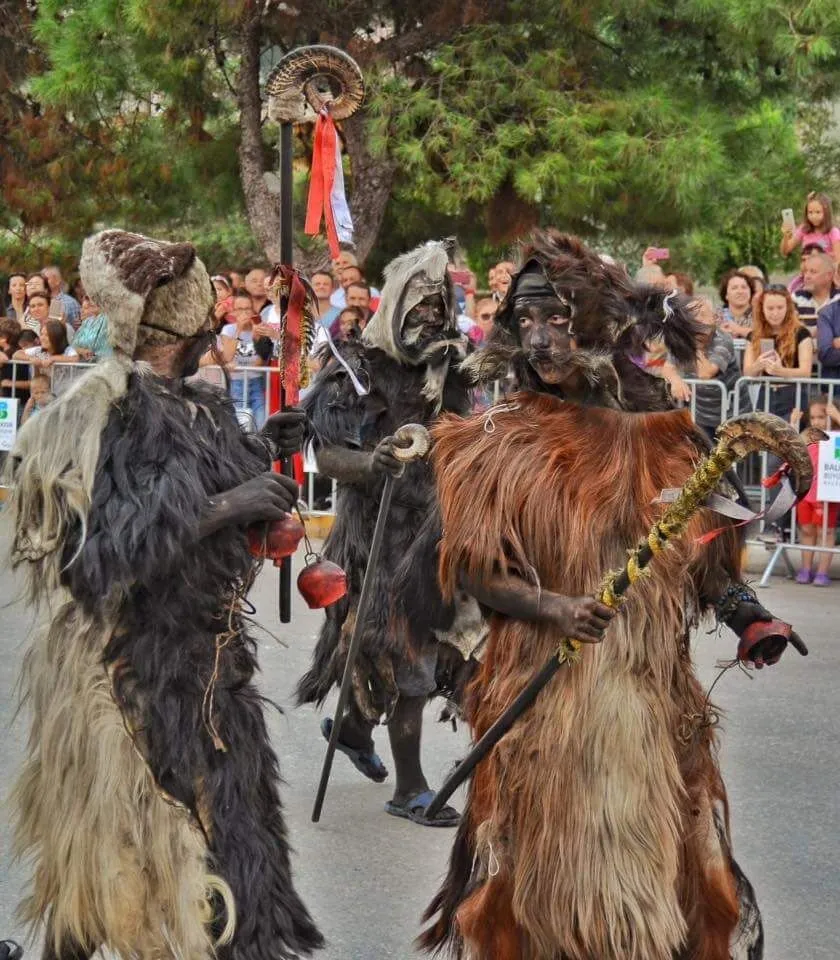
Academic Research on the Tradition
The primary written record on the Tülütabak tradition is Dağlıoğlu’s 1936 article “Tülükabak” in Kaynak magazine. It explains how leatherworking –debbağlık- was a dominant trade in Balıkesir, with 32 tanneries operating between 1930 and 1940. According to researcher Demet Şafak Aydın, the “Tülü Kabak” play was part of regional village entertainment, further linking the performance to communal identity.
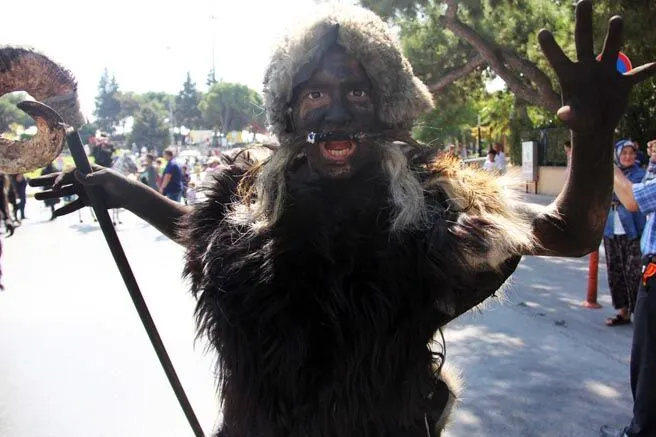
Cultural Characteristics of Tülütabaklar
Tülütabak groups typically consist of 8–10 men. One member plays the kadı (judge) and rides a horse, accompanied by a servant holding a feather duster to fan him. The kadı smokes from a long pipe, and the group walks through the crowd, startling onlookers, blackening faces with soot.
Despite the fright, people eagerly await the Tülütabak parade, with many hoping to be marked or photographed. In earlier times, attending the parade was popularly referred to as “going to see the Tülütabaklar.”
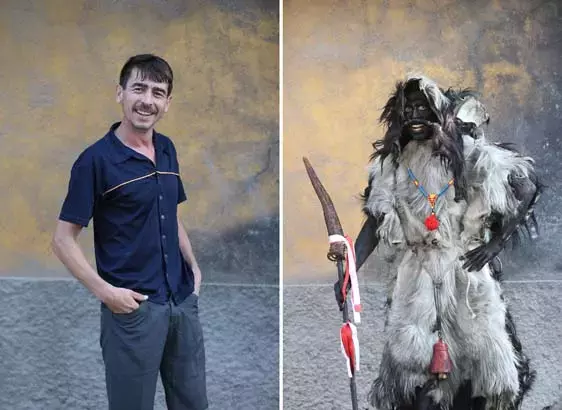
Debbağlık and Folk Performance in Balıkesir
Leatherworking (dabaklık) was a vital trade in Balıkesir. Tanneries often neighbored camel caravansaries, as camel transport was essential. During public ceremonies or weddings, guilds performed theatrical shows; cameliers dressed as camels, while tanners reenacted their historical roles as goat-skin clad Tülütabaklar.
The 40th issue of Kaynak magazine includes a detailed historical account of this traditional performance.
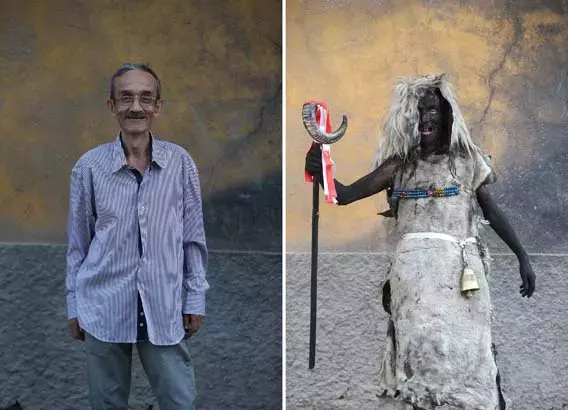
Cultural Legacy and UNESCO Recognition
On October 17, 2003, UNESCO adopted the Convention for the Safeguarding of Intangible Cultural Heritage, which Turkey ratified in 2006. Balıkesir contributes 12 elements to Turkey’s list, including:
- Kamberlik tradition
- Barana gatherings
- Neighborhood charity feasts
- Yağcıbedir carpets
- Tülütabaklar
- Camel play
- Gönen needle lace
- Felt-making
- Zili weaving
- Şayak-Aba weaving
- Sarıbeyler wartime bread
- Pamukçu men’s traditional dances
Tülütabaklar stand out as a unique expression of resistance, community pride, and living heritage.

